|
News Archive: Dec. 1-31 |

|
Dark matter hides, physicists seek
Scientists don't know what dark matter is, but they know it's all over the universe. Everything humans observe in the heavens‹galaxies, stars, planets and the rest‹makes up only 4 percent of the universe, scientists say. The remaining 96 percent is composed of dark matter and its even more mysterious sibling, dark energy.
 FULL STORY FULL STORY
 |  |
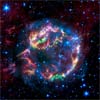
|
 |
Scientists work to improve space weather predictions
New instrumentation and observing techniques, being developed by researchers at the University of Illinois at Urbana-Champaign, are helping scientists better understand and predict space weather. Space weather can be caused by giant solar flares and coronal mass ejections from the sun, and can adversely affect life on Earth.
 FULL STORY FULL STORY
 |  |
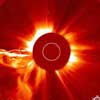
|
 |
OTHER HEADLINES Additional stories today
|
 |
2,000-year-old computer -- Cardiff University experts have led an international team in unravelling the secrets of a 2,000-year-old computer which could transform the way we think about the ancient world.

Lockheed GPS III team prepares for design milestone -- The U.S. Air Force has awarded Lockheed Martin a contract valued at approximately $50 million to execute a System Design Review for the next generation Global Positioning System Space Segment program, known as GPS Block III.
|
 |
Mars team teaches old rovers new tricks
NASA's twin Mars rovers, nearing the third anniversary of their landings, are getting smarter as they get older. The unexpected longevity of Spirit and Opportunity is giving the space agency a chance to field-test on Mars some new capabilities useful both to these missions and future rovers.
 FULL STORY FULL STORY
 |  |
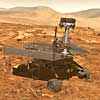
|
 |
Present day distribution of elusive first stars predicted
With the help of enormous computer simulations, astronomers have now shown that the first generation of stars - which have never been observed by scientists - should be distributed evenly throughout our galaxy, deepening the long-standing mystery about these missing stellar ancestors.
 FULL STORY FULL STORY
 |  |
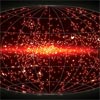
|
 |
OTHER HEADLINES Additional stories today
|
 |
ISS status report -- The three residents of the International Space Station spent a busy week unpacking, inventorying and stowing more than two tons of equipment and supplies left by the space shuttle Discovery.

ESA and JAXA satellites 'talk' to each other -- The European Space Agency's Envisat satellite and the Japan Aerospace Exploration Agency's data relay test satellite Kodama have successfully completed an interoperability test demonstrating that scientific data from Envisat can be transmitted to Kodama and from there transmitted to the Japanese ground receiving station in Tsukuba.
|
 |
Radar love: Asteroid detection and science
They are the celestial equivalent of sonograms. But their hazy outlines and ghostly features do not document the in-vivo development of a future taxpayer. Instead, they chronicle the exo-planetary comings-and-goings of some of Earth's least known, most nomadic, and at times most impactful neighbors.
 FULL STORY FULL STORY
 |  |
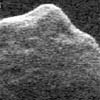
|
 |
Holloman forces trained for New Mexico shuttle landing
Shuttle Discovery landed safely at Kennedy Space Center, bringing the shuttle's mission to a successful end. Though it did not land at White Sands Missile Range, the emergency response team from Holloman stood ready to launch into action. Questionable weather at the primary landing site made White Sands the possible alternative.
 FULL STORY FULL STORY
 |  |
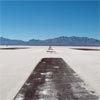
|
 |
Planet-hunting space telescope launched
A small European satellite began its mission Wednesday to peer into the blinding light of nearby stars in an attempt to discover the first rocky planets outside our solar system. The craft was launched by the new Russian Soyuz 2-1b rocket from Baikonur Cosmodrome, Kazakhstan.
 FULL STORY FULL STORY
 ESA RELEASE ESA RELEASE
 |  |
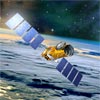
|
 |
Russia launches trio of navigation satellites
The latest additions to Russia's indigenous satellite navigation system successfully arrived in orbit Monday after a nearly four-hour ride aboard a Proton rocket.
 FULL STORY FULL STORY
 |  |
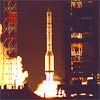
|
 |
Discovery returns home for the holidays
Space shuttle Discovery made a safe and successful sunset landing at Kennedy Space Center Friday to complete its two-week mission that prepared the space station to power the international expansion of the complex. Landing occurred at 5:32 p.m. EST.
 FULL STORY FULL STORY
 MISSION STATUS CENTER - live updates! MISSION STATUS CENTER - live updates!
 PREVIEW STORY PREVIEW STORY
 |  |
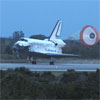
|
 |

Additional coverage for subscribers:
 VIDEO:
LONGER LENGTH MOVIE OF DISCOVERY'S RETURN PLAY VIDEO:
LONGER LENGTH MOVIE OF DISCOVERY'S RETURN PLAY
 VIDEO:
DISCOVERY LANDS AT KENNEDY SPACE CENTER PLAY VIDEO:
DISCOVERY LANDS AT KENNEDY SPACE CENTER PLAY
 VIDEO:
FIRST LANDING OPPORTUNITY WAVED OFF PLAY VIDEO:
FIRST LANDING OPPORTUNITY WAVED OFF PLAY

 VIDEO:
BEHIND THE SCENES IN MISSION CONTROL PLAY VIDEO:
BEHIND THE SCENES IN MISSION CONTROL PLAY
 VIDEO:
U.S./EUROPEAN POST-LANDING NEWS CONFERENCE PLAY VIDEO:
U.S./EUROPEAN POST-LANDING NEWS CONFERENCE PLAY
 VIDEO:
COMMENTS FROM COMMANDER POLANSKY PLAY VIDEO:
COMMENTS FROM COMMANDER POLANSKY PLAY
 VIDEO:
THOMAS REITER BACK ON EARTH PLAY VIDEO:
THOMAS REITER BACK ON EARTH PLAY

 VIDEO:
REPLAY FROM WIDESCREEN PLAYALINDA TRACKER PLAY VIDEO:
REPLAY FROM WIDESCREEN PLAYALINDA TRACKER PLAY
 VIDEO:
REPLAY FROM EAST OF THE RUNWAY PLAY VIDEO:
REPLAY FROM EAST OF THE RUNWAY PLAY
 VIDEO:
REPLAY FROM WEST OF THE RUNWAY PLAY VIDEO:
REPLAY FROM WEST OF THE RUNWAY PLAY
 VIDEO:
REPLAY FROM NORTH OF THE RUNWAY PLAY VIDEO:
REPLAY FROM NORTH OF THE RUNWAY PLAY
 VIDEO:
REPLAY FROM AN INFRARED CAMERA PLAY VIDEO:
REPLAY FROM AN INFRARED CAMERA PLAY
 VIDEO:
REPLAY FROM VEHICLE ASSEMBLY BUILDING ROOF PLAY VIDEO:
REPLAY FROM VEHICLE ASSEMBLY BUILDING ROOF PLAY

 VIDEO:
LANDING PREVIEW NEWS CONFERENCE PLAY VIDEO:
LANDING PREVIEW NEWS CONFERENCE PLAY
 VIDEO:
CREW BRIEFED ON WEATHER AND LANDING STRATEGY PLAY VIDEO:
CREW BRIEFED ON WEATHER AND LANDING STRATEGY PLAY
 VIDEO:
ANDE PAYLOAD DEPLOYED FROM DISCOVERY PLAY VIDEO:
ANDE PAYLOAD DEPLOYED FROM DISCOVERY PLAY
 VIDEO:
INTERVIEWS WITH CNN, ABC AND CHALLENGER CENTER PLAY VIDEO:
INTERVIEWS WITH CNN, ABC AND CHALLENGER CENTER PLAY

 VIDEO:
FINAL ORBITER INSPECTIONS PERFORMED PLAY VIDEO:
FINAL ORBITER INSPECTIONS PERFORMED PLAY
 VIDEO:
MEPSI PAYLOAD DEPLOYED FROM DISCOVERY PLAY VIDEO:
MEPSI PAYLOAD DEPLOYED FROM DISCOVERY PLAY
 VIDEO:
RAFT PAYLOAD DEPLOYED FROM DISCOVERY PLAY VIDEO:
RAFT PAYLOAD DEPLOYED FROM DISCOVERY PLAY
 MORE: STS-116 VIDEO COVERAGE MORE: STS-116 VIDEO COVERAGE
 SUBSCRIBE NOW SUBSCRIBE NOW

|
Shuttle boss talks landing day vs. inspection debate
The decision earlier this week to add a spacewalk to Discovery's mission and still preserve a final heat shield inspection today forced managers to delay re-entry one day to Friday and in so doing, give up a landing opportunity. NASA flight rules require a landing attempt Friday, even if that means diverting the shuttle to California or New Mexico. The latter option is a worst-case scenario that could expose the orbiter to sub-freezing weather and delay the ship's return to Florida by four to six weeks.
 FULL STORY FULL STORY
 |  |
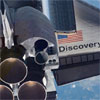
|
 |
Shuttle Discovery undocks from the space station
The space shuttle Discovery undocked from the international space station Tuesday after a successful four-spacewalk visit to re-wire the outpost and prepare it for arrival of European and Japanese research modules over the next two years.
 FULL STORY FULL STORY
 PREVIEW STORY PREVIEW STORY
 LANDING WEATHER LOOKS IFFY LANDING WEATHER LOOKS IFFY
 |  |

|
 |
German radar spy satellite launches into space
The first of a fleet of five identical all-weather German spy satellites was launched Tuesday aboard a Russian rocket to collect high-resolution images of the ground 24 hours a day.
 FULL STORY FULL STORY
 |  |

|
 |
Solar wing successfully retracted at last
Perched on the end of the space station's robot arm, astronaut Robert Curbeam, assisted by Swedish flier Christer Fuglesang, finally coaxed a set of balky solar blankets to fully retract Monday after repeatedly clearing guide wire hangups. The successful retraction of the huge array, which finally folded up like neatly pleated window blinds, was the final objective of Discovery's mission to re-wire the station.
 FULL STORY FULL STORY
 EVA UNDERWAY EVA UNDERWAY
 PREVIEW STORY PREVIEW STORY
 VIDEO PODCAST: SOLAR ARRAY RETRACTED VIDEO PODCAST: SOLAR ARRAY RETRACTED
 VIDEO PODCAST: FREE iTUNES SUBSCRIPTION VIDEO PODCAST: FREE iTUNES SUBSCRIPTION
 |  |
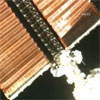
|
 |

Additional coverage for subscribers:
 VIDEO:
POST-SPACEWALK STATUS BRIEFING PLAY VIDEO:
POST-SPACEWALK STATUS BRIEFING PLAY
 VIDEO:
SUCCESSFUL ENDING TO SOLAR WING RETRACTION PLAY VIDEO:
SUCCESSFUL ENDING TO SOLAR WING RETRACTION PLAY
 VIDEO:
ARRAY RETRACTION ALMOST COMPLETED PLAY VIDEO:
ARRAY RETRACTION ALMOST COMPLETED PLAY
 VIDEO:
SPACEWALKERS SLOWLY COAX FOLDING PLAY VIDEO:
SPACEWALKERS SLOWLY COAX FOLDING PLAY
 VIDEO:
CURBEAM USES SCRAPER ON WING PLAY VIDEO:
CURBEAM USES SCRAPER ON WING PLAY
 VIDEO:
EVA GETS UNDERWAY PLAY VIDEO:
EVA GETS UNDERWAY PLAY
 VIDEO:
CREW SUITS UP PLAY VIDEO:
CREW SUITS UP PLAY

 VIDEO:
SPACEWALK PREVIEW BRIEFING PLAY VIDEO:
SPACEWALK PREVIEW BRIEFING PLAY
 VIDEO:
SATURDAY'S SPACEWALK EFFORTS ON THE ARRAY PLAY VIDEO:
SATURDAY'S SPACEWALK EFFORTS ON THE ARRAY PLAY
 VIDEO:
DISCOVERY LAUNCH REPLAYS PLAY VIDEO:
DISCOVERY LAUNCH REPLAYS PLAY
 MORE: STS-116 VIDEO COVERAGE MORE: STS-116 VIDEO COVERAGE
 SUBSCRIBE NOW SUBSCRIBE NOW

|
Telescope picks up glow of universe's first objects
New observations from NASA's Spitzer Space Telescope strongly suggest that infrared light detected in a prior study originated from clumps of the very first objects of the universe. The recent data indicate this patchy light is splattered across the entire sky and comes from clusters of bright, monstrous objects more than 13 billion light-years away.
 FULL STORY FULL STORY
 |  |

|
 |
Stardust findings override commonly held beliefs
Contrary to a popular scientific notion, there was enough mixing in the early solar system to transport material from the sun's sizzling neighborhood and deposit it in icy deep-space comets. It might have been like a gentle eddy in a stream or more like an artillery blast, but evidence from the Stardust mission shows that material from the sun's vicinity traveled to the edge of the solar system, beyond Pluto, as the planets were born.
 FULL STORY FULL STORY
 |  |

|
 |
OTHER HEADLINES Additional stories today
|
 |
NASA and Google to bring space exploration down to Earth -- NASA Ames Research Center and Google have signed a Space Act Agreement that formally establishes a relationship to work together on a variety of challenging technical problems ranging from large-scale data management and massively distributed computing, to human-computer interfaces.

XM completes new system with 'Rhythm' and 'Blues' -- XM Satellite Radio, the nation's leading satellite radio company serving the XM Nation of more than 7 million subscribers, Monday announced the completion of its new two-satellite broadcast system. The craft are named "Rhythm" and "Blues."
|
 |
Japan launches advanced communications test craft
Japan's largest satellite was launched by the nation's most powerful rocket Monday to begin a mission testing technologies to aid the burgeoning mobile communications industry.
 FULL STORY FULL STORY
 |  |

|
 |
Added spacewalk highlights shuttle risk trades
Faced with an unforgiving space station assembly sequence, NASA managers were forced to shoehorn an additional spacewalk into Discovery's mission to complete the retraction of a recalcitrant solar array. The spacewalk came at the expense of a landing weather contingency day but it was either that or give up a post-undocking heat shield inspection, an option many shuttle engineers were reluctant to consider.
 FULL STORY FULL STORY
 UPDATED FLIGHT PLAN UPDATED FLIGHT PLAN
 |  |
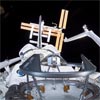
|
 |
Spacewalkers shake solar wing; Another EVA Monday
Astronaut Robert Curbeam, a weight lifter in his spare time, and fellow spacewalker Sunita "Suni" Williams, a former Navy diver and helicopter pilot, took turns shaking a huge solar array storage box Saturday in a bid to loosen up sticky grommets and fully retract unruly blankets. Despite considerable initial success, the astronauts ran into a particularly stubborn grommet on Williams' side and ran out of time, setting the stage for a fourth spacewalk Monday to complete the array's retraction.
 FULL STORY FULL STORY
 4TH SPACEWALK APPROVED 4TH SPACEWALK APPROVED
 COOLING PUMP STARTED COOLING PUMP STARTED
 RE-WIRING A SUCCESS RE-WIRING A SUCCESS
 SATURDAY'S PREVIEW STORY SATURDAY'S PREVIEW STORY
 |  |
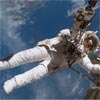
|
 |
Minotaur rocket makes sunrise ascent from Virginia
Virginia's Wallops Island hosted its first space launch in seven years Saturday morning when a Minotaur rocket blazed a trail into orbit with a U.S. Air Force demonstration satellite. Liftoff took place at 7 a.m. EST (1200 GMT).
 FULL STORY FULL STORY
 EARLIER PREVIEW STORY EARLIER PREVIEW STORY
 LAUNCH TIMELINE LAUNCH TIMELINE
 GROUND TRACK MAP GROUND TRACK MAP
 IMAGES: LAUNCH PHOTOS IMAGES: LAUNCH PHOTOS
 IMAGES: MORE LAUNCH PHOTOS IMAGES: MORE LAUNCH PHOTOS
 |  |

|
 |

Additional coverage for subscribers:
 VIDEO:
MINOTAUR ROCKET BLASTS OFF PLAY VIDEO:
MINOTAUR ROCKET BLASTS OFF PLAY
 VIDEO:
LAUNCH PAD CAMERA REPLAY 1 PLAY VIDEO:
LAUNCH PAD CAMERA REPLAY 1 PLAY
 VIDEO:
LAUNCH PAD CAMERA REPLAY 2 PLAY VIDEO:
LAUNCH PAD CAMERA REPLAY 2 PLAY
 VIDEO:
LAUNCH PAD CAMERA REPLAY 3 PLAY VIDEO:
LAUNCH PAD CAMERA REPLAY 3 PLAY
 VIDEO:
ROCKET BEING ASSEMBLED ON THE PAD PLAY VIDEO:
ROCKET BEING ASSEMBLED ON THE PAD PLAY
 SUBSCRIBE NOW SUBSCRIBE NOW

|
Solar array activities added to Saturday spacewalk
NASA managers late Friday evening told the Discovery astronauts that if enough time is available at the end of an already-planned spacewalk Saturday, two spacewalkers will be asked to carry out an up-close inspection of a partially retracted solar array to help engineers figure out what might be needed to coax the blankets into full retraction.
 FULL STORY FULL STORY
 CREW WILLING TO DO REPAIR CREW WILLING TO DO REPAIR
 |  |
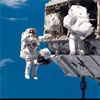
|
 |
Solar array 'wiggle' tests, possible retraction planned
NASA managers, thrilled with the success of a space station re-wiring spacewalk Thursday, plan to remotely shake and jiggle a partially retracted solar array today in a bid to free a hung up guide wire and coax the blankets into full retraction.
 PREVIEW STORY PREVIEW STORY
 VIDEO PODCAST: ISS REWIRED/DELTA LAUNCH VIDEO PODCAST: ISS REWIRED/DELTA LAUNCH
 VIDEO PODCAST: FREE iTUNES SUBSCRIPTION VIDEO PODCAST: FREE iTUNES SUBSCRIPTION
 |  |

|
 |
First flight a success for United Launch Alliance
A secret spacecraft for the U.S. government's spy satellite agency successfully rocketed into orbit Thursday afternoon from California's Vandenberg Air Force Base in a history-making launch, the first for the United Launch Alliance consortium.
 MISSION STATUS CENTER MISSION STATUS CENTER
 LAUNCH EVENTS TIMELINE LAUNCH EVENTS TIMELINE
 GROUND TRACK MAP GROUND TRACK MAP
 IMAGES: DELTA ROCKET LIFTS OFF IMAGES: DELTA ROCKET LIFTS OFF
 IMAGES: MORE LAUNCH PHOTOS IMAGES: MORE LAUNCH PHOTOS
 |  |

|
 |

Additional coverage for subscribers:
 VIDEO:
DAZZLING ONBOARD CAMERA FOOTAGE OF LAUNCH PLAY VIDEO:
DAZZLING ONBOARD CAMERA FOOTAGE OF LAUNCH PLAY
 VIDEO:
DELTA 2 ROCKET BLASTS OFF WITH NRO PAYLOAD PLAY VIDEO:
DELTA 2 ROCKET BLASTS OFF WITH NRO PAYLOAD PLAY
 VIDEO:
PAD GANTRY ROLLED BACK ON LAUNCH MORNING PLAY VIDEO:
PAD GANTRY ROLLED BACK ON LAUNCH MORNING PLAY
 VIDEO:
DELTA 2 ROCKET BEING ASSEMBLED ON THE PAD PLAY VIDEO:
DELTA 2 ROCKET BEING ASSEMBLED ON THE PAD PLAY
 SUBSCRIBE NOW SUBSCRIBE NOW

|
Station work continues despite stubborn solar array
Space station flight controllers, faced with an unruly solar panel and an increasingly tight schedule, put array troubleshooting on hold late Wednesday and pressed ahead with work to ready the lab complex for a critical re-wiring spacewalk Thursday.
 PREVIEW OF EVA PREVIEW OF EVA
 WEDNESDAY WRAPUP STORY WEDNESDAY WRAPUP STORY
 PREVIEW STORY PREVIEW STORY
 VIDEO: SHUTTLE MISSION COVERAGE VIDEO: SHUTTLE MISSION COVERAGE
 |  |
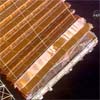
|
 |

Additional coverage for subscribers:
 VIDEO:
SOLAR ARRAY ROTATES FOR FIRST TIME PLAY VIDEO:
SOLAR ARRAY ROTATES FOR FIRST TIME PLAY
 VIDEO:
SOLAR ARRAY RETRACTS TWO BAYS PLAY VIDEO:
SOLAR ARRAY RETRACTS TWO BAYS PLAY
 VIDEO:
LEARN ABOUT THE STATION POWER SYSTEM PLAY VIDEO:
LEARN ABOUT THE STATION POWER SYSTEM PLAY
 VIDEO:
DISCOVERY LAUNCH REPLAYS PLAY VIDEO:
DISCOVERY LAUNCH REPLAYS PLAY
 MORE: STS-116 VIDEO COVERAGE MORE: STS-116 VIDEO COVERAGE
 SUBSCRIBE NOW SUBSCRIBE NOW

|
Truss spacer added to station during spacewalk
Astronauts Bob Curbeam and Swedish flier Christer Fuglesang successfully bolted a short spacer segment to the space station's main solar power truss Tuesday during the first of three spacewalks planned for the shuttle Discovery's mission.
 FULL STORY FULL STORY
 PREVIEW STORY PREVIEW STORY
 MASTER FLIGHT PLAN MASTER FLIGHT PLAN

 VIDEO PODCAST: FIRST SPACEWALK VIDEO PODCAST: FIRST SPACEWALK
 |  |
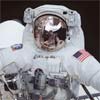
|
 |
Discovery wing checked for space debris impact
The Discovery astronauts used the space station's robot arm for a quick, unplanned inspection of the shuttle's left wing outboard leading edge panels based on sensor data indicating a possible micrometeoroid hit earlier Monday.
 FULL STORY FULL STORY
 EARLIER STORY EARLIER STORY

 VIDEO PODCAST: DISCOVERY DOCKED VIDEO PODCAST: DISCOVERY DOCKED
 |  |
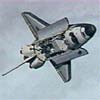
|
 |

Additional coverage for subscribers:
 VIDEO:
MONDAY'S MISSION STATUS BRIEFING PLAY VIDEO:
MONDAY'S MISSION STATUS BRIEFING PLAY
 VIDEO:
MISSION CONTROL ORDERS WING INSPECTION PLAY VIDEO:
MISSION CONTROL ORDERS WING INSPECTION PLAY
 VIDEO:
DISCOVERY DOES BACKFLIP BELOW STATION PLAY VIDEO:
DISCOVERY DOES BACKFLIP BELOW STATION PLAY
 VIDEO:
DISCOVERY LAUNCH REPLAYS PLAY VIDEO:
DISCOVERY LAUNCH REPLAYS PLAY
 MORE: STS-116 VIDEO COVERAGE MORE: STS-116 VIDEO COVERAGE
 SUBSCRIBE NOW SUBSCRIBE NOW

|
Proton launches into the night with Malaysian craft
Asia's newest communications satellite blasted off from frigid Kazakhstan Monday to begin a 15-year mission to beam a variety of services directly to homes and offices across the world's most populous continent.
 FULL STORY FULL STORY
 MISSION STATUS CENTER MISSION STATUS CENTER
 |  |
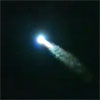
|
 |
Discovery completes rendezvous with the station
Space shuttle Discovery crossed the finish line of its two-day race since launch to catch the space station. Docking occurred at 5:12 p.m. EST over southeast Asia. About an hour before the linkup, Discovery performed a 360-degree backflip while the station crew photographed the shuttle's heatshield.
 DOCKING STORY DOCKING STORY
 PREVIEW STORY PREVIEW STORY
 DOCKING TIMELINE DOCKING TIMELINE

 VIDEO PODCAST: HEATSHIELD CHECKED VIDEO PODCAST: HEATSHIELD CHECKED
 |  |

|
 |
Astronauts perform post-launch inspections today
The Discovery astronauts were awakened for their first full day in space today by a recording of the Beatles' "Here Comes the Sun" beamed up from mission control around 10:50 a.m.
 PREVIEW STORY PREVIEW STORY
 MISSION STATUS CENTER - live updates! MISSION STATUS CENTER - live updates!
 MASTER FLIGHT PLAN MASTER FLIGHT PLAN
 |  |
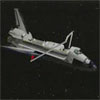
|
 |
Discovery dazzles in nighttime ascent to space
The shuttle Discovery thundered into orbit Saturday night, lighting up the night sky for hundreds of miles around as NASA kicked off a critical flight to conduct electronic bypass surgery on the international space station.
 FULL STORY FULL STORY
 COUNTDOWN TIMELINE COUNTDOWN TIMELINE
 LAUNCH TRAJECTORY DATA LAUNCH TRAJECTORY DATA
 MISSION QUICK-LOOK MISSION QUICK-LOOK

 VIDEO PODCAST - launch report VIDEO PODCAST - launch report
 |  |

|
 |

Additional coverage for subscribers:
 VIDEO:
SHORT CLIP OF DISCOVERY BLASTING OFF PLAY VIDEO:
SHORT CLIP OF DISCOVERY BLASTING OFF PLAY
 VIDEO:
DISCOVERY'S LAUNCH THROUGH FUEL TANK SEPARATION PLAY VIDEO:
DISCOVERY'S LAUNCH THROUGH FUEL TANK SEPARATION PLAY
 VIDEO:
WIDESCREEN VIEW FROM PLAYALINDA BEACH TRACKER PLAY VIDEO:
WIDESCREEN VIEW FROM PLAYALINDA BEACH TRACKER PLAY
 VIDEO:
POST-LAUNCH NEWS CONFERENCE PLAY VIDEO:
POST-LAUNCH NEWS CONFERENCE PLAY

 VIDEO:
MS3 CHRISTER FUGLESANG BOARDS PLAY VIDEO:
MS3 CHRISTER FUGLESANG BOARDS PLAY
 VIDEO:
MS4 JOAN HIGGINBOTHAM BOARDS PLAY VIDEO:
MS4 JOAN HIGGINBOTHAM BOARDS PLAY
 VIDEO:
MS5 SUNI WILLIAMS BOARDS PLAY VIDEO:
MS5 SUNI WILLIAMS BOARDS PLAY
 VIDEO:
COMMANDER POLANSKY BOARDS DISCOVERY PLAY VIDEO:
COMMANDER POLANSKY BOARDS DISCOVERY PLAY
 VIDEO:
ASTROVAN DELIVERS CREW TO PAD 39B PLAY VIDEO:
ASTROVAN DELIVERS CREW TO PAD 39B PLAY
 VIDEO:
ASTRONAUTS DEPART QUARTERS FOR PAD PLAY VIDEO:
ASTRONAUTS DEPART QUARTERS FOR PAD PLAY
 VIDEO:
CREW FINISHES DONNING SPACESUITS PLAY VIDEO:
CREW FINISHES DONNING SPACESUITS PLAY
 VIDEO:
ASTRONAUTS IN DINING ROOM PLAY VIDEO:
ASTRONAUTS IN DINING ROOM PLAY
 VIDEO:
TIME-LAPSE MOVIE OF PAD GANTRY ROLLBACK TODAY PLAY VIDEO:
TIME-LAPSE MOVIE OF PAD GANTRY ROLLBACK TODAY PLAY

 VIDEO:
BIOGRAPHIES OF THE DISCOVERY ASTRONAUTS PLAY VIDEO:
BIOGRAPHIES OF THE DISCOVERY ASTRONAUTS PLAY
 VIDEO:
NARRATED STS-116 MISSION PREVIEW MOVIE PLAY VIDEO:
NARRATED STS-116 MISSION PREVIEW MOVIE PLAY
 VIDEO:
OVERVIEW OF STS-116 MISSION PLAY VIDEO:
OVERVIEW OF STS-116 MISSION PLAY
 VIDEO:
SHUTTLE/ISS PROGRAM PERSPECTIVE PLAY VIDEO:
SHUTTLE/ISS PROGRAM PERSPECTIVE PLAY
 VIDEO:
PREVIEW OF MISSION'S SPACEWALKS PLAY VIDEO:
PREVIEW OF MISSION'S SPACEWALKS PLAY
 VIDEO:
ASTRONAUTS' PRE-FLIGHT NEWS BRIEFING PLAY VIDEO:
ASTRONAUTS' PRE-FLIGHT NEWS BRIEFING PLAY
 MORE: STS-116 VIDEO COVERAGE MORE: STS-116 VIDEO COVERAGE
 SUBSCRIBE NOW SUBSCRIBE NOW

|
|
News Headlines |

|
All-American satellite payload lofted by Ariane 5
Two communications satellites destined to serve millions of Americans were delivered to space Friday evening to begin their television and Internet broadcasting missions. Liftoff of the Ariane 5 ECA rocket occurred on-time at 2208 GMT (5:08 p.m. EST) from French Guiana.
 FULL STORY FULL STORY
 MISSION STATUS CENTER MISSION STATUS CENTER
 |  |

|
 |
Minotaur poised for its first blastoff from Virginia
The first launch from a newly christened commercial spaceport on the coast of Virginia will haul a U.S. military experimental tactical satellite and a tiny research craft into space Monday morning.
 FULL STORY FULL STORY
 LAUNCH TIMELINE LAUNCH TIMELINE
 GROUND TRACK MAP GROUND TRACK MAP
 |  |

|
 |
Weather forecast remains poor for Discovery launch
Shuttle weather officers are continuing to predict a 70 percent chance of bad weather for Saturday's attempt to launch Discovery on a space station assembly mission.
 FULL STORY FULL STORY
 |  |
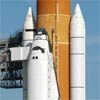
|
 |
Shuttle Discovery launch delayed to Saturday
After a nail-biting, down-to-the-wire countdown, launch director Mike Leinbach called off an attempt to launch the shuttle Discovery Thursday night on a critical space station mission because of low, thickening clouds over the Kennedy Space Center.
 FULL STORY FULL STORY
 |  |
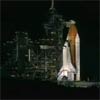
|
 |

Additional coverage for subscribers:
 VIDEO:
LONGER LENGTH MOVIE OF THE SCRUB PLAY VIDEO:
LONGER LENGTH MOVIE OF THE SCRUB PLAY
 VIDEO:
SCRUB CALLED DUE TO LOW CLOUDS PLAY VIDEO:
SCRUB CALLED DUE TO LOW CLOUDS PLAY
 VIDEO:
ASTRONAUTS DEPART QUARTERS FOR PAD PLAY VIDEO:
ASTRONAUTS DEPART QUARTERS FOR PAD PLAY
 VIDEO:
CREW FINISHES DONNING SPACESUITS PLAY VIDEO:
CREW FINISHES DONNING SPACESUITS PLAY
 VIDEO:
ASTRONAUTS IN DINING ROOM THURSDAY PLAY VIDEO:
ASTRONAUTS IN DINING ROOM THURSDAY PLAY
 VIDEO:
PAD'S ROTATING SERVICE STRUCTURE ROLLED BACK PLAY VIDEO:
PAD'S ROTATING SERVICE STRUCTURE ROLLED BACK PLAY
 MORE: STS-116 VIDEO COVERAGE MORE: STS-116 VIDEO COVERAGE
 SUBSCRIBE NOW SUBSCRIBE NOW

|
Water may be spurting on Mars
Mars Global Surveyor photographs have revealed bright new deposits seen in two gullies on Mars that suggest water carried sediment through them sometime during the past seven years. Liquid water, as opposed to the water ice and water vapor known to exist at Mars, is considered necessary for life. The new findings heighten intrigue about the potential for microbial life on Mars.
 FULL STORY FULL STORY
 |  |
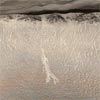
|
 |

Additional coverage for subscribers:
 VIDEO:
MARS IMAGES PRESENTED BY THE SCIENTISTS PLAY VIDEO:
MARS IMAGES PRESENTED BY THE SCIENTISTS PLAY
 VIDEO:
QUESTION AND ANSWER SESSION PLAY VIDEO:
QUESTION AND ANSWER SESSION PLAY
 SUBSCRIBE NOW SUBSCRIBE NOW

|
Shuttle countdown rolls on
Space shuttle Discovery remains scheduled for blastoff Thursday night from Kennedy Space Center. The management team's day-before-launch meeting cleared both the shuttle overvoltage spike and the solid rocket booster adhesive issues that were under review. The lingering worry is the weather.
 MORNING STORY MORNING STORY
 WEATHER FORECAST WEATHER FORECAST
 |  |

|
 |

Additional coverage for subscribers:
 VIDEO:
WEDNESDAY'S COUNTDOWN AND WEATHER UPDATE PLAY VIDEO:
WEDNESDAY'S COUNTDOWN AND WEATHER UPDATE PLAY
 VIDEO:
STS-116 PRE-LAUNCH NEWS CONFERENCE PLAY VIDEO:
STS-116 PRE-LAUNCH NEWS CONFERENCE PLAY
 MORE: STS-116 VIDEO COVERAGE MORE: STS-116 VIDEO COVERAGE
 SUBSCRIBE NOW SUBSCRIBE NOW

|
Spacecraft catches black hole munching on a star
A giant black hole has been caught red-handed dipping into a cosmic cookie jar of stars by NASA's Galaxy Evolution Explorer. This is the first time astronomers have seen the whole process of a black hole eating a star, from its first to nearly final bites.
 FULL STORY FULL STORY
 |  |

|
 |
OTHER HEADLINES Additional stories today
|
 |
Globalstar signs contract for new satellite constellation -- Alcatel Alenia Space will design, manufacture and deliver Globalstar's second-generation constellation of 48 low-earth-orbit (LEO) satellites for the company's mobile communications system.

Astrium Satellites delivers ARABSAT's BADR-4 in orbit -- The BADR-4 satellite built by Astrium Satellites has been handed over to ARABSAT as part of the in-orbit delivery contract and has entered commercial service. The craft will be operated by ARABSAT of Riyadh, Kingdom of Saudi Arabia.

Jim Maser named PWR president; Byron Wood retires -- Jim Maser has been named president of Pratt & Whitney Rocketdyne (PWR) effective Dec. 4. Maser succeeds Byron Wood, who is retiring after 43 years with PWR. Maser comes to PWR from SpaceX, where he was president and chief operating officer.
|
 |
Engineers troubleshoot last-minute shuttle issues
After a lengthy launch-minus-two-day review, NASA managers Tuesday night tentatively cleared the shuttle Discovery for liftoff Thursday, weather permitting, pending resolution of two last-minute technical issues. The issues do not appear to be show stoppers, but engineers are collecting additional data to make sure.
 FULL STORY FULL STORY
 |  |
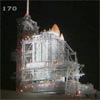
|
 |
Countdown running for shuttle Discovery launch
Space shuttle Discovery's three-day countdown began at 11 p.m. Monday night inside Firing Room 4 of the Complex 39 launch control center. Liftoff remains scheduled for 9:36 p.m. EST Thursday to begin another difficult space station construction mission.
 FULL STORY FULL STORY
 PODCAST: WATCH NOW | ITUNES SIGNUP PODCAST: WATCH NOW | ITUNES SIGNUP
 |  |

|
 |

Additional coverage for subscribers:
 VIDEO:
TUESDAY MORNING'S COUNTDOWN STATUS REPORT PLAY VIDEO:
TUESDAY MORNING'S COUNTDOWN STATUS REPORT PLAY
 VIDEO:
LAUNCH COUNTDOWN BEGINS TICKING PLAY VIDEO:
LAUNCH COUNTDOWN BEGINS TICKING PLAY
 MORE: STS-116 VIDEO COVERAGE MORE: STS-116 VIDEO COVERAGE
 SUBSCRIBE NOW SUBSCRIBE NOW

|
Mars orbiter photographs Spirit and Viking landers
New images from NASA's Mars Reconnaissance Orbiter show three additional NASA spacecraft that have landed on Mars: the Spirit rover active on the surface since January 2004 and the two Viking landers that successfully reached the surface in 1976.
 FULL STORY FULL STORY
 |  |
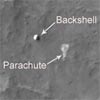
|
 |
Second try at space station reboost goes better
The Russian cargo freighter attached to the back of the space station fired its engines for an altitude reboost maneuver Monday. The burn adjusted the station's orbit to permit shuttle Discovery the luxury of performing the desired rendezvous profile no matter what day the ship blasts off during the next couple of weeks.
 FULL STORY FULL STORY
 |  |

|
 |
NASA focuses on lunar base concepts for exploration
NASA's return to the moon next decade will be focused on establishing a permanent base near one of the lunar poles to take advantage of near-constant sunlight for solar power, agency officials said today.
 FULL STORY FULL STORY
 NASA STATEMENT NASA STATEMENT
 |  |

|
 |

Additional coverage for subscribers:
 VIDEO:
LUNAR STRATEGY PRESENTATION PLAY VIDEO:
LUNAR STRATEGY PRESENTATION PLAY
 VIDEO:
QUESTION AND ANSWER SESSION PLAY VIDEO:
QUESTION AND ANSWER SESSION PLAY
 SUBSCRIBE NOW SUBSCRIBE NOW

|
Discovery astronauts arrive at the Cape for launch
Space shuttle Discovery's astronauts arrived at Kennedy Space Center just before 4 p.m. EST Sunday in a wave of T-38 two-seater jets, touching down on the spaceport's concrete runway after a flight from their home base in Houston.
 FULL STORY FULL STORY
 PODCAST: WATCH NOW | ITUNES SIGNUP PODCAST: WATCH NOW | ITUNES SIGNUP
 |  |
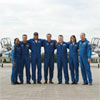
|
 |

Additional coverage for subscribers:
 VIDEO:
POST-ARRIVAL COMMENTS FROM THE CREW PLAY VIDEO:
POST-ARRIVAL COMMENTS FROM THE CREW PLAY
 VIDEO:
ASTRONAUTS ARRIVE IN WAVE OF T-38 JETS PLAY VIDEO:
ASTRONAUTS ARRIVE IN WAVE OF T-38 JETS PLAY
 VIDEO:
BIOGRAPHIES OF THE DISCOVERY ASTRONAUTS PLAY VIDEO:
BIOGRAPHIES OF THE DISCOVERY ASTRONAUTS PLAY
 VIDEO:
NARRATED STS-116 MISSION PREVIEW MOVIE PLAY VIDEO:
NARRATED STS-116 MISSION PREVIEW MOVIE PLAY
 SUBSCRIBE NOW SUBSCRIBE NOW

|
Negative vibes from space
Astronomers have discovered the first negatively charged molecule in space, identifying it from radio signals that were a mystery until now. "We've spotted a rare and exotic species, like the white tiger of space," says an astronomer at the Harvard-Smithsonian Center for Astrophysics.
 FULL STORY FULL STORY
 |  |
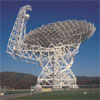
|
 |
Cosmic tool for forecasting
To a non-scientist, the words 'radio occultation' might sound a little spooky. But this relatively simple NASA-developed technology at the heart of a new satellite network named Cosmic is proving to be a powerful new tool for weather and climate forecasting.
 FULL STORY FULL STORY
 |  |
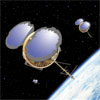
|
 |
Another attempt at station reboost possible Monday
Russian rocket scientists believe they understand the cause of an aborted rocket firing Wednesday to raise the orbit of the international space station. An attempt to complete the reboost maneuver, designed to ensure the shuttle Discovery can reach the outpost throughout its upcoming launch window, is expected Monday, officials said Friday, after adjustments to control software.
 FULL STORY FULL STORY
 |  |

|
 |
United Launch Alliance begins operations
United Launch Alliance (ULA), the new joint venture combining the Delta and Atlas rocket programs of Boeing and Lockheed Martin, officially opened its doors Friday as a new enterprise focused on providing world-class space launch services for the U.S. government at lower cost.
 NEWS ANNOUNCEMENT NEWS ANNOUNCEMENT
 |  |
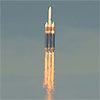
|
 |
|
Read our earlier news archive page.
|



